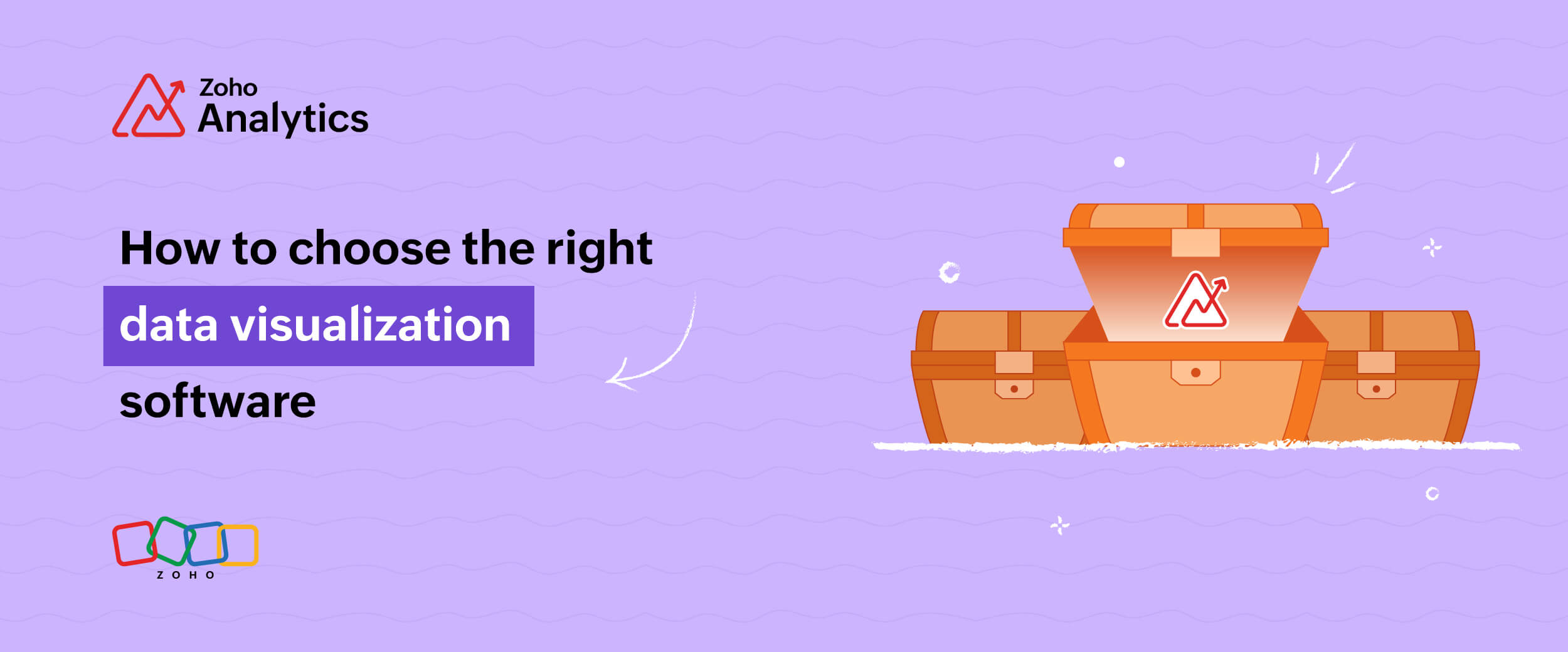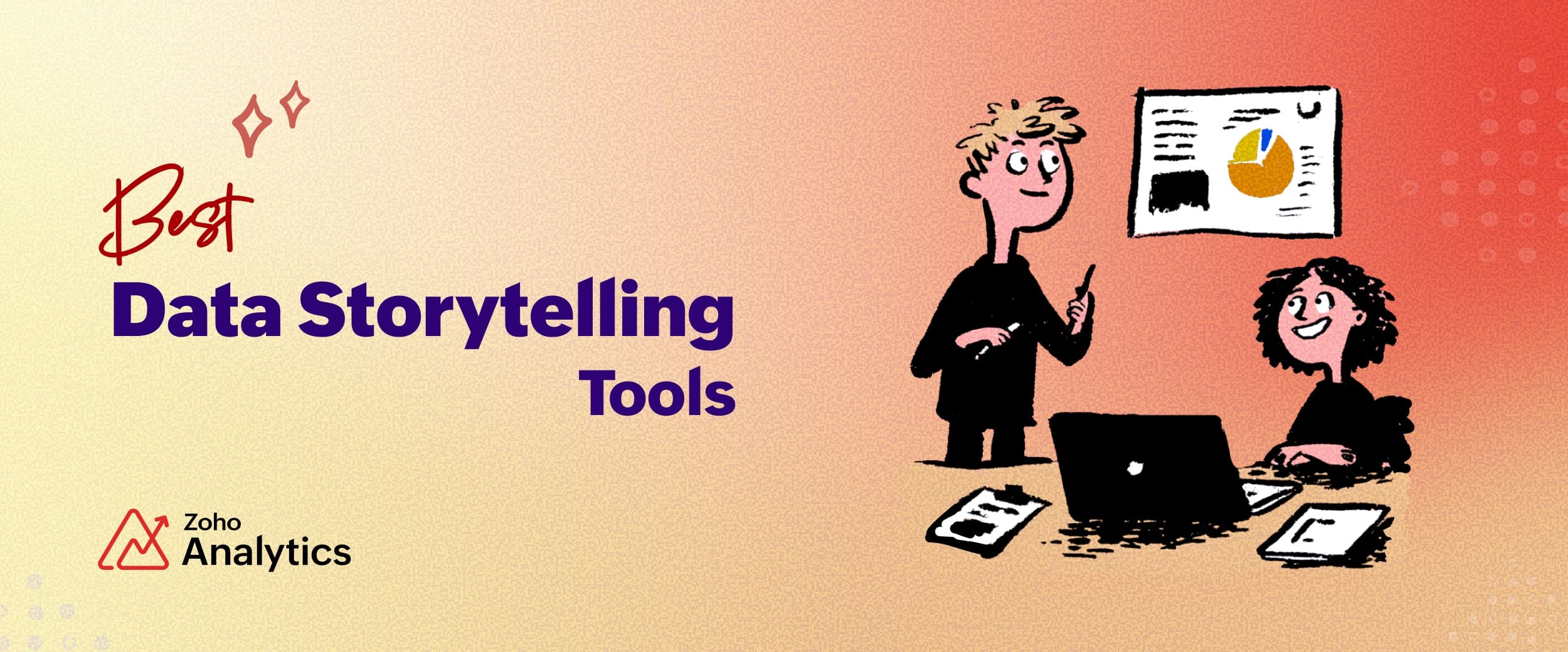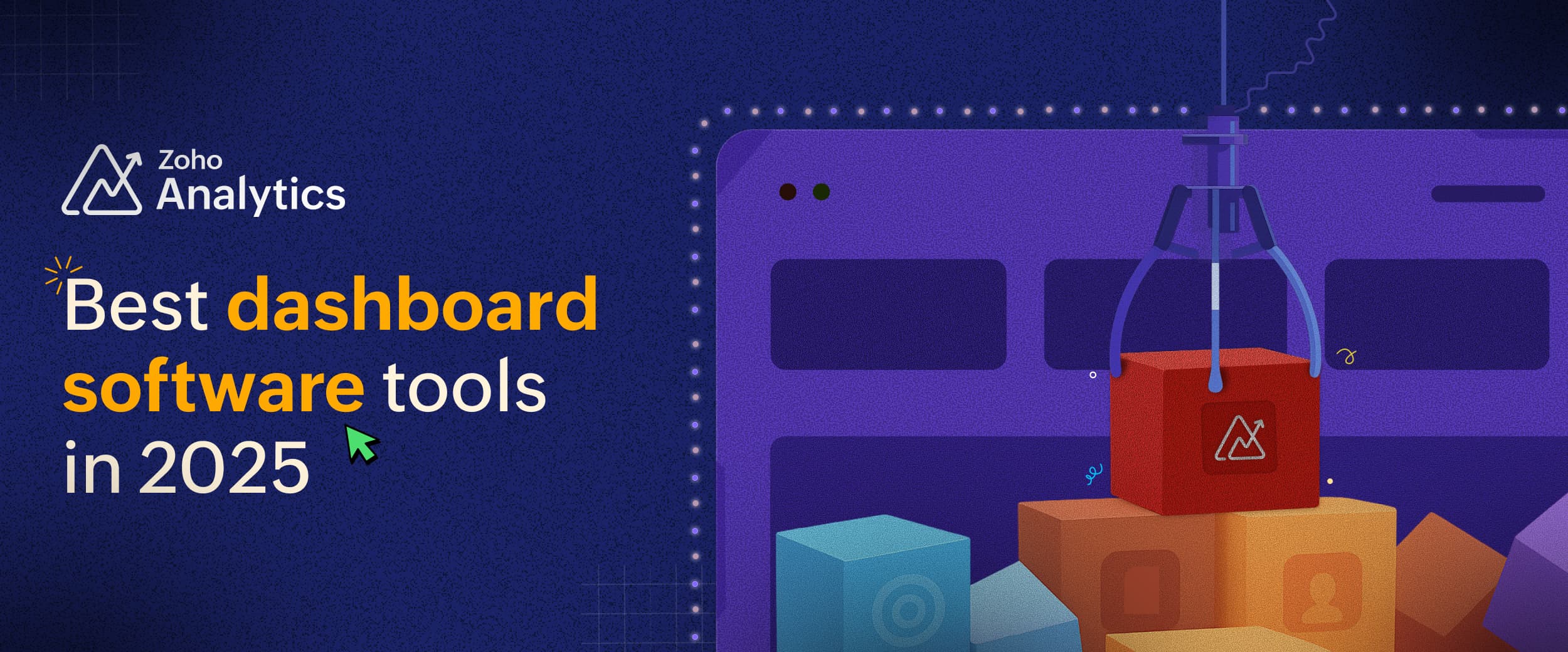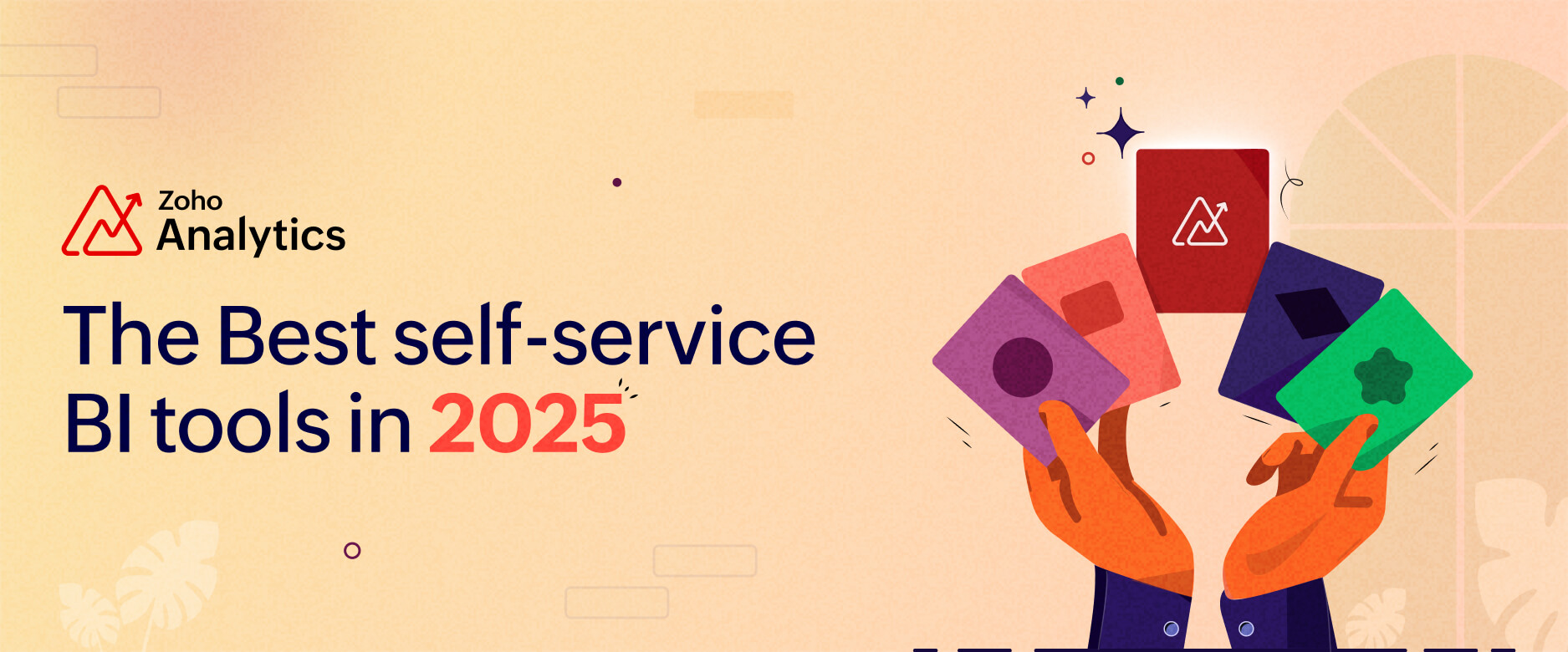- HOME
- BI & Analytics
- A Buyer’s Guide to Choosing the Best Data Visualization Tool
A Buyer’s Guide to Choosing the Best Data Visualization Tool
- Last Updated : October 27, 2025
- 476 Views
- 8 Min Read
Businesses collect more data than ever, from every platform, team, and customer touchpoint. Trying to process all of it manually? Nearly impossible.
Without the right tools, valuable insights get buried, reports take forever, and decisions slow down. In a world that moves fast, slow data means missed opportunities.
That’s where modern data visualization comes in. From simple charts to AI-powered dashboards, the right tool turns raw data into real business clarity.

Evaluation criteria to choose the data visualization tool
Selecting the right data visualization software requires a thorough evaluation of its features, usability, and compatibility with your business.
Although choosing a data visualization tool depends on your specific needs, we've compiled a list of essential factors to consider.
Integration support: Your organization’s data may be stored in multiple locations, including databases, data warehouses, and cloud-based applications like CRM, ERP, and marketing platforms.
The data visualization tool you choose should support seamless integration with all your sources for efficient data aggregation and real-time analytics.
Look for solutions with prebuilt connectors, API support, and compatibility with various file formats to simplify the data integration process.
Data preparation options: Before visualizing data, it often requires cleaning, transformation, and structuring. Your datasets may include duplicates, missing values, or inconsistent formats that need preprocessing before analysis.
A good data visualization tool should offer built-in data preparation features such as data blending, automatic cleansing, and ETL (extract, transform, load) capabilities.
Look for solutions that simplify data preparation without requiring deep technical expertise.
Self-service and ease of use: Not everyone using the tool will have a technical background. Your team may include data analysts, marketers, executives, and other stakeholders who need quick insights without relying on IT support.
Choosing a self-service data visualization tool with an intuitive interface, drag-and-drop functionality, and prebuilt templates allows users to create reports and dashboards easily.
A tool with a minimal learning curve ensures faster adoption and improved productivity.
Customization and flexibility: Your business may have unique reporting needs, requiring specific chart styles, color schemes, and dashboard layouts. Additionally, some users may need advanced features like forecasting, anomaly detection, or the ability to set up data alerts.
The right visualization tool should provide extensive customization options, allowing users to tailor dashboards, reports, and charts according to their preferences.
The tool should also support advanced features so users can extract advanced insights.
Visualization types: Different data visualization types of data require different visualization formats. Your organization may need to analyze time-series data, geographic trends, or multidimensional comparisons, which requires a variety of charts, graphs, and interactive elements.
A robust data visualization tool should offer a wide range of visualization types, including bar charts, line graphs, scatter plots, heat maps, and geographic maps.
Make sure the tool provides interactive data visualizations to explore data dynamically.
Sharing and collaboration: Data insights are valuable only when they're shared effectively across teams and departments. Your organization may require real-time collaboration, role-based access control, or automated reporting for different stakeholders.
The right tool should provide easy sharing options, including direct links, scheduled reports, and cloud-based collaboration. It should also allow users to control access levels to protect sensitive data.
Cloud-based tools often provide better collaboration features than on-premises solutions.
Data presentation and storytelling: A well-designed dashboard or report should not only present numbers but also tell a compelling story. Your team may need to highlight key insights, trends, and anomalies in a way that non-technical users can easily understand.
A good data visualization tool should support storytelling features such as annotations, tooltips, and interactive presentations. It should also allow users to create interactive slideshows with contextual charts and reports.
Look for tools that offer storytelling features, such as slideshows.
Cost considerations: Budget constraints play a significant role in choosing a data visualization tool. Your organization may have different cost factors to consider, such as licensing fees, per-user pricing, or hidden costs for premium features.
When evaluating tools, consider both initial and long-term costs. Free data visualization tools may be suitable for small businesses, while enterprises might require more advanced, scalable solutions.
Look for transparent pricing models and determine whether the tool provides the best value for your needs.
How to choose the right data visualization tool
To select the right data visualization tool, you need to evaluate it carefully and ensure it meets your business needs. Here's a step-by-step approach to help you make the right choice.
Step 1: Identify your objectives
Before diving straight into exploring different tools, you'll need to define the purpose of your data visualization needs.
Having clear objectives will help you choose a tool that aligns with your business requirements. For example, a marketing team may need interactive data visualizations for campaign performance, while a finance team may require data visualization dashboards with detailed forecasting charts.
Step 2: Assess your data sources
Your data may come from multiple sources, such as databases, cloud business applications, and spreadsheets. Make sure the visualization tool is compatible with your data sources.
Step 3: Determine user skills
The usability of a tool depends on the technical expertise of your team. If your users have limited knowledge, check for drag-and-drop interfaces, prebuilt templates and dashboards, and automated reporting features. AI data visualization tools help non-technical users create visualizations in less time.
For advanced users, consider tools that offer SQL queries, ML models, and API support.
Find a balance between ease of use and advanced functionality for maximizing user adoption.
Step 4: Evaluate features
Different tools offer different levels of functionality. Consider the following key features based on your needs:
- Easy data integration
- Multiple visualization types
- AI assistant
- Advanced analytics capabilities
- Real-time collaboration
- Publishing and embedding options
- Automated slideshow generation
Step 5: Compare pricing and scalability
Cost plays a significant role in decision making. Some tools offer free versions with limited features, while others require a subscription.
Consider up-front costs, scalability, and hidden costs and choose a tool that provides the best balance between affordability and long-term value.
Step 6: Test with a free trial or demo
Most leading data visualization tools offer free trials or live demos. Take advantage of these to explore the user interface, assess compatibility with your data sources, and test performance with real datasets.
You can also invite key stakeholders to test and gather feedback on usability, performance, and overall functionality before making a final decision.
The importance of selecting the right data visualization tool
Choosing the right data visualization software is a critical decision; it directly impacts how effectively an organization can interpret and communicate data. With the increasing reliance on data-driven decision making, the right tool can make the difference between spotting valuable insights or getting lost in messy data.
A well-chosen data visualization tool provides:
- Faster insights with intuitive reports and dashboards
- Better accuracy and decision making
- Real-time monitoring so that stakeholders always have access to up-to-the-minute information
Risks of choosing the wrong tool
- Steep learning curve: If a tool is too complex, users may struggle to adopt it. This leads to inefficiencies.
- Limited integration: If the tool you chose doesn't support key data sources, it'll require additional manual effort to consolidate data.
- High costs without ROI: Expensive solutions with unnecessary features can waste resources.
Find your data visualization tool
This process might seem complicated and time-consuming, so we built a questionnaire to make it easier.
Select your requirements in the questionnaire, and it will suggest the best data visualization software based on your inputs.
What makes Zoho Analytics the right data visualization tool?
Choosing the right data‑visualization tool is crucial. It determines whether your team uncovers insights or gets lost in data noise. Zoho Analytics delivers exactly what you need: strong features, intuitive usability, and enterprise‑grade flexibility.
1. Connect to 500+ data sources
No matter your data lives in cloud apps, on‑premises databases, spreadsheets, or feeds, Zoho Analytics brings it all together. Integrate seamlessly with databases (MySQL, Oracle, SQL Server), data lakes (Snowflake, BigQuery), business apps (CRM, ERP, marketing tools), and simple files (CSV, Excel) in a few clicks.
2. Automated sync keeps insights fresh
Old data leads to outdated decisions. Set your preferred refresh intervals, like hourly, daily, or custom, and your dashboards will stay updated without any manual work.
3. Prepare data with 250+ transforms
Raw data rarely arrives in perfect shape. With Zoho Analytics, you get more than just visualization. Choose from over 250 built‑in transformation options: join data sources, apply formulas, blend data from multiple tables.
4. 50+ visualization types for real storytelling
Zoho Analytics offers over 50 chart and widget types:
- Standard visuals: bar, line, area, pie
- Advanced styles: heat maps, geo maps, bubble charts, funnel charts
- Pivot tables, KPI widgets, tabular grids
- Fully customizable dashboards: drag & drop layout, customizable themes
Combine these to build reports that not only display numbers—but tell stories.
5. Secure collaboration and sharing
Insights matter only when they reach the right people. Share dashboards across your team or externally with fine‑grained access control. Set viewer, editor, or commenter roles. Add contextual comments and annotations so your team collaborates directly in the dashboard environment. 
6. Alerts and anomaly detection
Configure data alerts that notify you when a threshold is crossed or an anomaly emerges. Stay ahead of issues, not behind them.
7. Built‑in AI with Zia
Analytics should be easy, even for non‑technical users. With Zia, our AI agent, you get:
- Ask Zia: Just ask a question, “Show me last quarter’s region‑wise sales,” and get a full report.
- Zia Insights: Receive narrative summaries of key findings from your visualizations.
- Zia Suggestions: Get smart recommendations for chart types and layouts based on your data.
8. Advanced analytics for power users
When you’re ready to go deeper, Zoho Analytics has you covered:
- Code Studio: Use SQL, Python or R to build custom logic, advanced joins and models.
- AutoML: Predict trends, build forecasts, and find outlier behavior—all with minimal setup.
Try out Zoho Analytics with a 15-day free trial. If you have any questions or need a little help figuring out how it fits your workflow, you can always book a free personalized demo.
Trusted by 20,000+ businesses. No credit card required.
Frequently Asked Questions
1. What features should data visualization software have?
Look for support for multiple data sources, customizable charts, interactive dashboards, data prep tools, collaboration options, AI insights, and scalability. These ensure faster analysis, smarter decisions, and future-proof reporting.
2. How can I visualize digital marketing performance in customizable dashboards?
Connect platforms like Google Ads, Facebook, HubSpot, or Mailchimp. Track key KPIs, use filters and alerts, build tailored dashboards for SEO, social, or paid campaigns, and automate reports to stay informed and client-ready.
3. How do I choose a platform for multi-channel data visualizations?
Choose a platform that integrates with all your tools, supports unified dashboards, allows flexible reporting, scales with data growth, and is easy for non-technical users to explore and build visualizations.
 Pradeep V
Pradeep VPradeep is a product marketer at Zoho Analytics with a deep passion for data and analytics. With over eight years of experience, he has authored insightful content across diverse domains, including BI, data analytics, and more. His hands-on expertise in building dashboards for marketing, sales, and major sporting events like IPL and FIFA adds a data-driven perspective to his writing. He has also contributed guest blogs on LinkedIn, sharing his knowledge with a broader audience. Outside of work, he enjoys reading and exploring new ideas in the marketing world.


